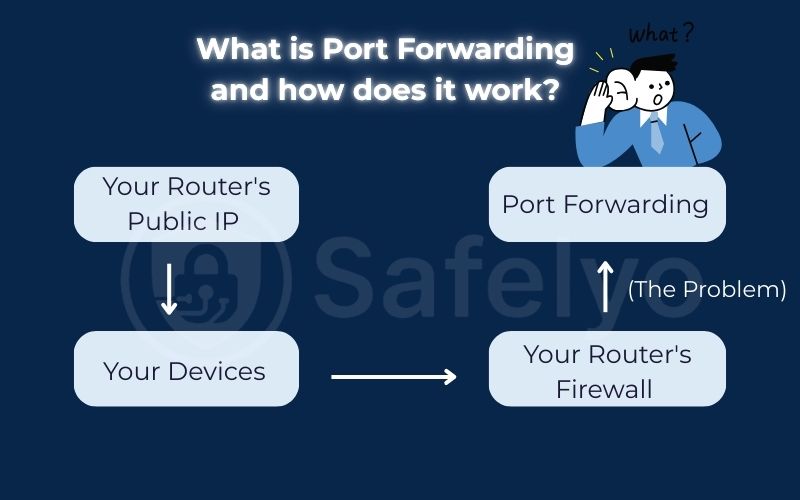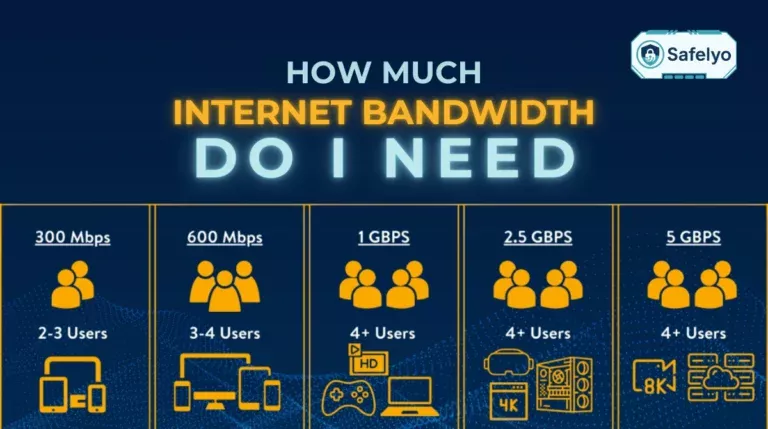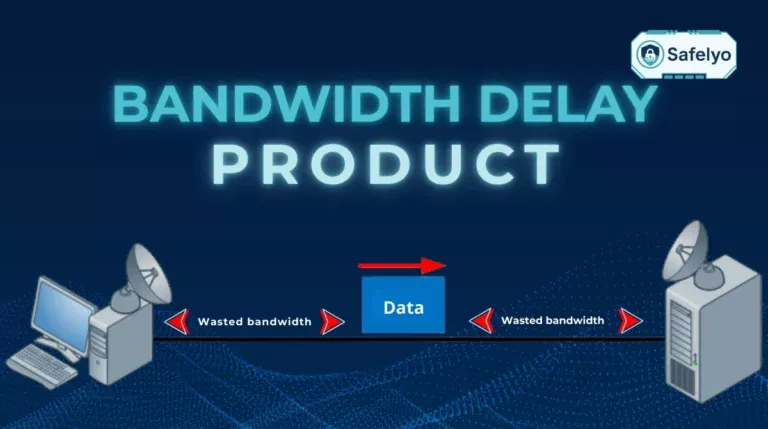Have you ever tried to host a game server for your friends, speed up your torrents, or access a security camera from afar, only to be blocked by your own network? The solution often involves a powerful but confusing technique called port forwarding. Think of it as giving a very specific instruction to the security guard of your digital home.
In today’s connected world, the default security of your router is designed to keep unsolicited traffic out. But sometimes, you need to let the right traffic in. This creates a critical trade-off between performance and security, a balance that can be intimidating to manage.
As a network security consultant, I’ve seen countless users either blindly follow a tutorial to open ports, unknowingly exposing their network, or give up on hosting a game entirely out of fear. But what is port forwarding is a question that deserves a safe, clear answer. It isn’t just for IT experts; it’s a technique that, when understood, can be managed safely by anyone.
In this comprehensive guide, you’ll discover:
- How port forwarding works, explained with a simple apartment building analogy.
- A clear flowchart to help you decide if you actually need it.
- The most common uses are gaming, torrenting, and remote access.
- The real security risks and, most importantly, the safest ways to do it.
Don’t guess when it comes to your network’s security. Let me demystify this powerful tool and guide you through the process of getting connected safely.
What is Port Forwarding in 30 seconds?
Port forwarding is a technique that tells your router’s firewall to allow specific internet connections to reach a particular device on your home network. It’s commonly used for hosting game servers, speeding up torrents, and remote access. While useful, it carries security risks because it opens a “door” to your network. The safest way to use port forwarding is through a VPN that supports the feature, as this protects your real IP address.
1. What is Port Forwarding, and how does it work?
The term “port forwarding” sounds highly technical, but the concept behind it is something you already understand from everyday life. Over the years, I’ve found the best way to explain it is by imagining your home network as a large apartment building.
Your Router's Public IP (The Building Address)
On the internet, your entire home network has one single public address. Think of this as the street address of a large apartment building, for example, “123 Internet Street.” Every piece of mail or visitor from the outside world goes to this one address first.
Your Devices (The Apartments)
Inside the building, each of your devices – your PC, your PlayStation 5, your phone, your security cameras – has its own private room number. This is its private IP address (like 192.168.1.101). You can have hundreds of apartments, but they all share the same main building address.
Your Router's Firewall (The Front Desk Security)
By default, your router has a built-in firewall (NAT firewall) that acts like a very strict security guard at the front desk. This guard’s main job is to reject all unsolicited visitors. If someone just walks in off the street and asks to go to Apartment #101, the guard will say “No” and turn them away. This is fantastic for your basic security, as it prevents random hackers from trying to access your devices.
The Problem: An Expected Guest
But what if you’re expecting a specific guest? For example, you want to host a private Minecraft server for your friends, which is running in Apartment #101 (your PC). When your friend’s connection arrives at “123 Internet Street,” the security guard sees an unsolicited visitor and, following the default rules, blocks them.
Port Forwarding (The Instruction for the Guard)
This is where port forwarding comes in. How does port forwarding work? It’s like you walking down to the front desk and leaving a specific, written instruction for the guard:
“If anyone comes to the building and asks for the Minecraft party, which is happening at door number 25565, please send them directly to Apartment #101.”
Now, the guard knows exactly what to do. When your friend’s communication request arrives asking for that specific port (25565), the guard looks at your instruction and forwards it directly to the correct device (your PC). You’ve successfully “forwarded a port“.

2. Do you really need port forwarding?
Port forwarding is a powerful tool, but in my experience, many people think they need it when a simpler or safer solution exists. Before you dive into your router’s settings, it’s crucial to determine if opening a port is truly necessary for your goal.
I’ve designed this simple flowchart to walk you through the decision-making process. It will help you identify your specific need and guide you toward the best solution.
Start Here: What is your primary goal?
1. Are you trying to host a game server for friends or fix a “Strict” NAT Type in a game?
YES
→ You are a prime candidate for port forwarding. This is one of the most common and legitimate reasons to use it. Proceed to our guides on how to do it safely.
NO
→ Continue to Question 2.
2. Do you need to access a device on your home network from the outside (e.g., a home computer, security camera, or Plex media server)?
YES
→ Port forwarding is one way to do this. However, a safer and often easier alternative is to use a VPN service with a remote access feature (like NordVPN’s Meshnet). This creates a secure, encrypted connection to your devices without opening any ports on your home router. I would strongly recommend exploring this safer option first.
NO
→ Continue to Question 3.
3. Are you trying to increase your download/upload speeds for P2P file-sharing or torrenting?
YES
→ This is another valid use case. The most effective and secure way to do this is by using a VPN with port forwarding support. This opens a port on the VPN server, not your home router, protecting your real IP address while boosting your P2P speeds.
NO
→ You probably don’t need port forwarding. For general browsing, streaming, and connecting to online games (not hosting), your router’s default settings are both safer and sufficient.
3. When to use port forwarding: The most common use cases
If the flowchart confirmed that port forwarding is a potential solution for you, you’re likely dealing with one of a few classic networking challenges. From my years helping gamers and remote workers, these are the situations where setting up a port forward can turn a frustrating experience into a seamless one.
3.1. Port forwarding for gaming
This is, by far, the most common reason people first learn about port forwarding. It can solve two major gaming headaches:
- Hosting Game Servers: If you want to host a private server for games like Minecraft, Valheim, or Terraria, you need a way for your friends’ connections to get past your router’s “security guard” and reach your PC. Port forwarding provides that direct path.
- Fixing a Strict NAT Type: Many console games (on PlayStation, Xbox, and Nintendo Switch) classify your network connection with a NAT Type. A “Strict” or “Moderate” NAT Type can prevent you from joining friends’ parties, cause voice chat issues, and result in long matchmaking times. Manually forwarding the specific ports a game uses can often change your NAT Type to “Open,” resolving these frustrating connection problems.
3.2. Port forwarding for torrenting
For users of P2P (peer-to-peer) file-sharing applications, port forwarding for torrenting can make a night-and-day difference in performance. By opening the listening port your torrent client uses, you allow it to connect directly to more peers in the swarm (both seeders and leechers). This increased connectivity can dramatically boost your download and upload speeds, especially for less popular files.
>> You may also be interested in: Best VPN for torrenting in 2025: Tested for speed & privacy
3.3. Remote Access
Before the rise of user-friendly VPNs and cloud services, port forwarding was the primary way to access devices on your home network from afar. It allows you to create a direct link to a specific service, such as:
- Accessing your home computer’s desktop (remote desktops).
- Managing files on a NAS (Network Attached Storage) device.
- Viewing the live feed from your home security cameras.
While this method still works, it’s crucial to understand the security risks involved, which we’ll cover next.
>> You may also be interested in: The best easy-to-use VPNs for beginners (2025)

4. Is port forwarding safe? The risks of using port forwarding
This brings us to the most critical question: Is port forwarding safe? The honest answer is that it can be, but it introduces inherent risks.
When you forward a port, you are intentionally opening a direct, unfiltered door from the vast, and sometimes hostile, internet directly to a specific device on your private network. In our apartment building analogy, you’ve told the security guard to let a specific type of visitor bypass the front desk and go straight to your apartment door.
This is a deliberate choice to trade a layer of security for a specific functionality. From my perspective as a security consultant, I only recommend it when absolutely necessary. The main port forwarding risks fall into two categories:
4.1. Exposing vulnerable services
The biggest danger comes from the application or service you are forwarding the port to. If that software has a security flaw, hackers can exploit that open port to attack it.
A real-world example: Many older IP security cameras or NAS devices have outdated software with known vulnerabilities. If you forward a port to one of these devices, an attacker could potentially exploit that flaw to view your camera feed or, in a worst-case scenario, gain a foothold to attack other devices on your local network.
4.2. Increased visibility to attackers
Hackers and bots constantly run automated port scanners across the internet, probing random IP addresses for any open doors. When your router has a forwarded port, it will respond to these scans. This makes your network visible and flags it as a more interesting target for potential cyber threats compared to a network with a fully closed firewall. It’s like a house with an unlocked window – it’s more likely to attract a burglar’s attention.
The crucial takeaway is this:
Never forward a port unless you absolutely need to, and you trust the security of the application you are forwarding it to. For a modern, well-maintained gaming PC running a popular game, the risk is relatively low. For an old, unpatched camera system, the risk of unauthorized access is significantly higher.
5. How to port forward safely: A comparison of methods
If you’ve decided that the benefits of port forwarding outweigh the risks for your specific situation, the next step is to choose how you’re going to do it. Not all methods are created equal, and some are significantly safer than others.
As a security professional, my advice is always to choose the method that exposes your personal network the least. Here’s a direct comparison of the three most common approaches.
| Method | Security Level | Difficulty | Best For |
|---|---|---|---|
| UPnP (Automatic) | ⭐ Lowest (Can open ports without your knowledge) |
⭐⭐⭐⭐⭐ Easiest |
Convenience, but I strongly recommend disabling it on your router due to the high security risks. |
| Port Forwarding on Your Router | ⭐⭐ Moderate (Exposes your home IP and network) |
⭐⭐⭐ Moderate |
Gamers and server hosts who understand and accept the risk of opening a direct door to their home network. |
| VPN with Port Forwarding | ⭐⭐⭐⭐⭐ Highest (Hides your home IP completely) |
⭐⭐⭐⭐ Easy (If the VPN app supports it) |
Torrenters, gamers, and any privacy-conscious user who wants the benefits without the direct risk to their home network. |
THE SAFEST SOLUTION
VPN with Port Forwarding
This method is, without question, the best of both worlds and the one I personally use and recommend. When you use a VPN with port forwarding, you get the full benefits of an open port, but the port is opened on the VPN server, not your home router.
Let’s go back to our apartment analogy. Instead of giving instructions to the security guard at your actual home address, you’re giving the instructions to a guard at a secure, remote PO Box that the VPN provides. All the traffic goes to the PO Box first. Your real home address remains completely hidden and protected behind your router’s firewall.
This means you can get the improved port forwarding for gaming or torrenting performance you need, but your home network and your real IP address are never directly exposed to the internet. Private Internet Access (PIA) and Proton VPN are two of my top recommendations for VPNs that offer this feature with a user-friendly interface.
6. How to port forward on your router
If you’ve decided to proceed with forwarding a port directly on your router, this guide will walk you through the general steps. It’s important to remember that every router’s admin interface is slightly different, so the exact names of menus might vary. Think of this as a universal map, but you’ll still need to read the specific street signs on your device.
Here’s the typical process for how to port forward.
Step 1: Find your device's private IP address
You need to tell the router which “apartment” to send the traffic to. To do this, you need the private IP address of the device you’re setting the rule for (e.g., your PC or PlayStation).
- On Windows 11: Go to Settings > Network & Internet, click on your connection (e.g., Wi-Fi), and find the “IPv4 address”. It will look like 192.168.x.x.
- On macOS: Go to System Settings > Network, select your connection, click Details… > TCP/IP, and look for the “IP Address”.
Pro Tip: It’s a good idea to set a “static” or “reserved” IP for this device in your router settings. This ensures the “apartment number” never changes, so your port forwarding rule will always work.
Step 2: Log in to your router's admin page
Open a web browser and type in your router’s IP address. This is usually 192.168.1.1 or 192.168.0.1. You’ll find the correct address and the login password printed on a sticker on your router.
Step 3: Find the port forwarding section
This is the trickiest part, as it’s named differently by various manufacturers. Hunt through the settings for a menu labeled:
- Port Forwarding
- Virtual Servers
- Applications & Gaming
- NAT Forwarding
It’s often located under “Advanced Settings” or “WAN” settings.
Step 4: Create a new port forwarding rule
Once you find the section, you’ll need to create a new rule by filling in a few boxes. You’ll typically be asked for:
- Service Name: A name for your rule (e.g., “Minecraft Server”).
- Port Number / Range: The specific port or range of ports you want to open (e.g., 25565 for Minecraft). Some routers have an “External Port” and “Internal Port”; in most cases, these will be the same number.
- Device IP / Internal IP Address: The private IP address of your device from Step 1.
- Protocol: The type of traffic. The game or application guide will tell you whether to choose TCP, UDP, or both.
Step 5: Save and apply your settings
Click “Save“, “Apply“, or “Enable” to activate the rule. Your port is now forwarded. You can use an online “Open Port Checker” tool to verify that the port is now visible from the Internet.
7. FAQ about port forwarding
We’ve covered the details, the risks, and the safest methods, but you might still have a few specific questions. Here are direct answers to the most common queries about port forwarding.
What is port forwarding?
Port forwarding is a networking technique where you configure your router to send specific types of incoming internet traffic directly to a particular device on your home network. It’s essentially creating a rule that says, “If a connection for this specific purpose arrives, send it to this specific device.”
What is the purpose of port forwarding?
The main purpose of port forwarding is to make services on your home network accessible from the internet. This is necessary for activities like hosting a game server, enabling remote access to a computer or security camera, and improving speeds for P2P applications like torrenting.
What is an example of port forwarding?
A classic example of port forwarding is setting up a Minecraft server. You would create a rule on your router to forward all traffic arriving on port 25565 directly to the private IP address of the computer that is running the server. This allows your friends to connect to your game world from anywhere.
What is port forwarding for gaming?
Port forwarding for gaming is used to improve your connection for multiplayer games. It can help you host your own game servers and, crucially, can change your NAT Type from “Strict” or “Moderate” to “Open.” An Open NAT Type allows for better matchmaking and a more stable connection with other players.
Is port forwarding the same as a VPN?
No, they are not the same thing, but they can be used together. A VPN is a service that encrypts your entire internet connection for privacy. Port forwarding is a configuration that opens a specific path through your firewall. The safest method is using a VPN with port forwarding, which opens a port on the VPN server, not your home router.
Will port forwarding increase my internet speed?
Generally, no. It will not increase your overall internet download speed from your ISP. However, port forwarding for torrenting can dramatically increase your P2P file-sharing speeds by allowing you to connect to more peers in the swarm.
What’s the difference between UPnP vs. port forwarding?
The main difference is control versus convenience. Port forwarding is a manual process where you decide exactly which port opens to which device. UPnP (Universal Plug and Play) is an automatic process where devices can ask the router to open ports for them. UPnP is convenient, but it is considered a major security risk because you don’t control what doors are being opened on your network.
8. Conclusion
Port forwarding is a powerful networking tool that can solve frustrating connection issues for gamers and power users, but it’s a tool that must be used with care and understanding. Opening a door to your private network should never be taken lightly.
- Port forwarding acts like an instruction for your router to direct specific internet traffic to a device on your network.
- It’s essential for hosting game servers and can significantly speed up torrenting.
- It comes with security risks, as you are opening a direct door from the internet to a device.
- The safest way to use it is through a trusted VPN with port forwarding, which protects your real IP address.
Before you open any port, always ask yourself if you truly need it and if you’ve considered the risks. If you do, prioritize the safest method possible to get the performance you want without compromising your security.
For users who need the benefits of port forwarding with the highest level of security, a specialized VPN is the best solution. Explore the reviews of the Best VPNs of Safelyo for advanced users in our Tech How-To Simplified section to find the right fit.






